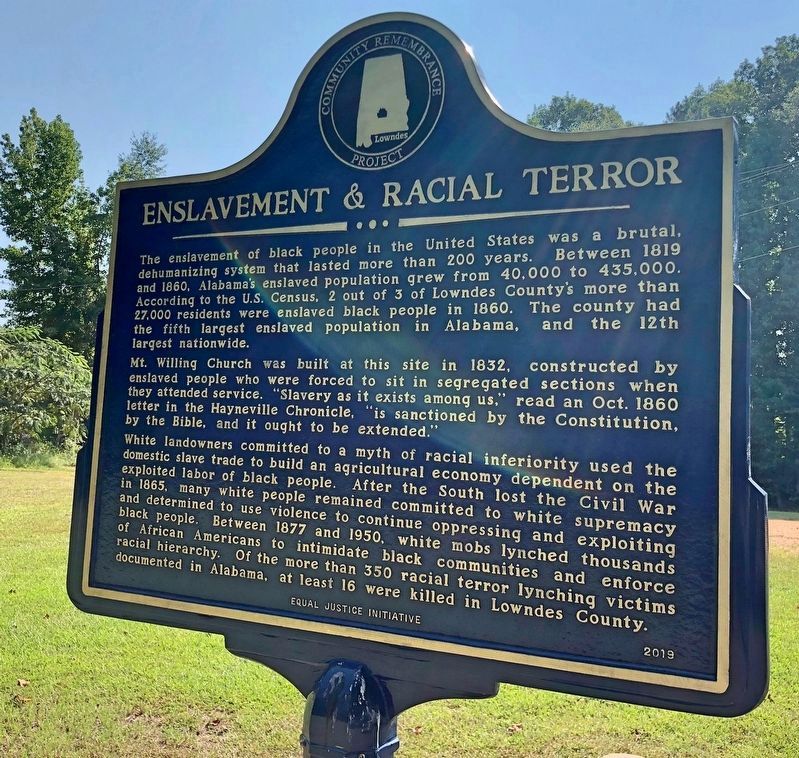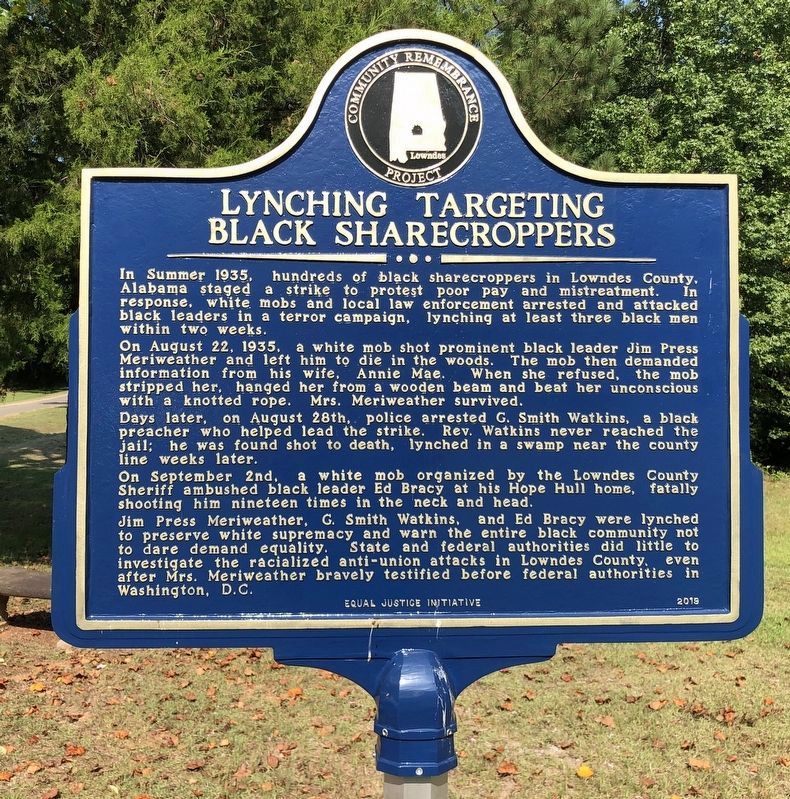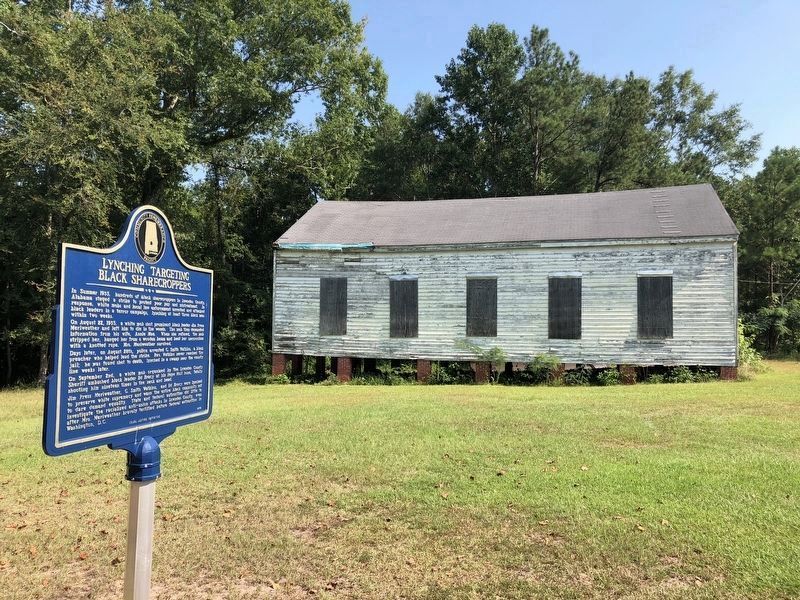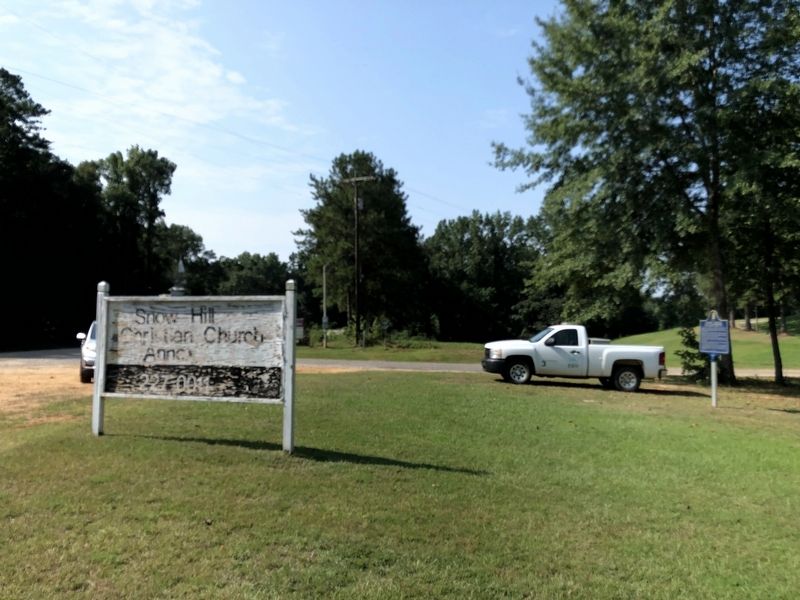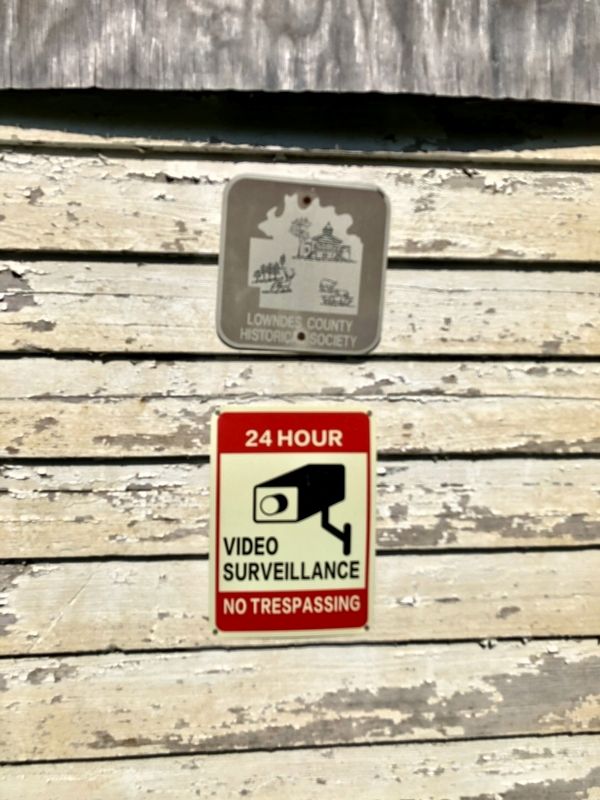Mt. Willing in Lowndes County, Alabama — The American South (East South Central)
Enslavement & Racial Terror / Lynching Targeting Black Sharecroppers
Community Remembrance Project
Mt. Willing Church was built at this site in 1832, constructed by enslaved people who were forced to sit in segregated sections when they attended service. “Slavery as it exists among us," read an Oct. 1860 letter in the Hayneville Chronicle,"is sanctioned by the Constitution, by the Bible, and it ought to be extended."
White landowners committed to a myth of racial inferiority used the domestic slave trade to build an agricultural economy dependent on the exploited labor of black people. After the South lost the Civil War in 1865, many white people remained committed to white supremacy and determined to use violence to continue oppressing and exploiting black people. Between 1877 and 1950, white mobs lynched thousands of African Americans to intimidate black communities and enforce racial hierarchy. Of the more than 350 racial terror lynching victims documented in Alabama, at least 16 were killed in Lowndes County.
On August 22, 1935, a white mob shot prominent black leader Jim Press Meriweather and left him to die in the woods. The mob then demanded information from his wife, Annie Mae. When she refused, the mob stripped her, hanged her from a wooden beam and beat her unconscious with a knotted rope. Mrs. Meriweather survived.
Days later, on August 28th, police arrested G. Smith Watkins, a black preacher who helped lead the strike. Rev. Watkins never reached the jail; he was found shot to death, lynched in a swamp near the county line weeks later.
On September 2nd, a white mob organized by the Lowndes County Sheriff ambushed black leader Ed Bracy at his Hope Hull home, fatally shooting him nineteen times in the neck and head.
Jim Press Meriweather, G. Smith Watkins, and Ed Bracy were lynched to preserve white supremacy and warn the entire black community not to dare demand equality. State and federal authorities did little to investigate the racialized anti-union attacks in Lowndes County, even after Mrs. Meriweather bravely testified before federal authorities in Washington, D.C.
Erected 2019 by Equal Justice Initiative Community Remembrance Project.
Topics and series. This historical marker is listed in these topic lists: African Americans • Civil Rights. In addition, it is included in the Lynching in America series list. A significant historical date for this entry is August 22, 1935.
Location. 32° 4.257′ N, 86° 41.909′ W. Marker is in Mt. Willing, Alabama, in Lowndes County. Marker is at the intersection of Snow Hill Drive and Alabama Route 21, on the right when traveling west on Snow Hill Drive. Touch for map. Marker is in this post office area: Fort Deposit AL 36032, United States of America. Touch for directions.
Other nearby markers. At least 8 other markers are within 13 miles of this marker, measured as the crow flies. The Crosby Water System "The Well" (approx. 5.6 miles away); Varner's Cash Store (approx. 10.3 miles away); In Memory of Jonathan Myrick Daniels (approx. 10.4 miles away); Lynching in America / The Courthouse Lynching of Theo Calloway (approx. 10.4 miles away); Sherling Lake (approx. 12.2 miles away); Searcy School House / Searcy Community
(approx. 12.3 miles away); The Federal Road and The Palings / Fort Dale 1818 (approx. 12.4 miles away); Bartram's Trail (approx. 12˝ miles away).
Also see . . . Slavery - Wikipedia article. (Submitted on September 2, 2020, by Byron Hooks of Sandy Springs, Georgia.)
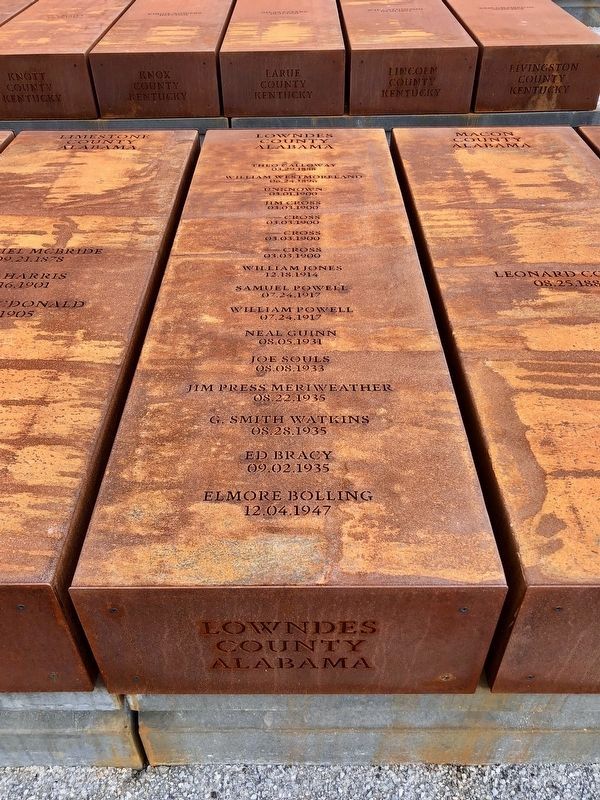
Photographed By Mark Hilton, May 31, 2018
6. People lynched in Lowndes County with the 3 names near bottom.
Part of the National Memorial for Peace and Justice, in Montgomery, Alabama, the memorial is dedicated to the legacy of enslaved black people, people terrorized by lynching, African Americans humiliated by racial segregation and Jim Crow, and people of color burdened with contemporary presumptions of guilt and police violence.
One of the over 800 corten steel monuments, one for each county in the United States where a racial terror lynching took place.
Credits. This page was last revised on August 14, 2021. It was originally submitted on August 11, 2020, by Mark Hilton of Montgomery, Alabama. This page has been viewed 443 times since then and 63 times this year. Photos: 1, 2, 3, 4, 5. submitted on August 11, 2020, by Mark Hilton of Montgomery, Alabama. 6. submitted on February 24, 2021, by Mark Hilton of Montgomery, Alabama.
